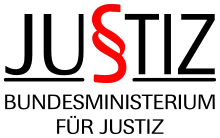Section sign
The section sign, §, is a typographical character for referencing individually numbered sections of a document; it is frequently used when citing sections of a legal code.[1] It is also known as the section symbol, section mark, double-s, or silcrow.[2][3]
| § | |
|---|---|
Section sign | |
| In Unicode | U+00A7 § SECTION SIGN (HTML § · §) |
| Related | |
| See also | U+00B6 ¶ PILCROW SIGN |
Use

The section sign is often used when referring to a specific section of a legal code. For example, in Bluebook style, "Title 16 of the United States Code Section 580p" becomes "16 U.S.C. § 580p".[4] The section sign is frequently used along with the pilcrow (¶) also known as the "paragraph sign", to reference a specific paragraph within a section of a document. While § is usually read in spoken English as the word section, many other languages use the word "paragraph" exclusively to refer to a section of a document (especially of legal text), and use other words to describe a paragraph in the English sense. Consequently, in those cases it may be read as paragraph, and may occasionally be described as a "paragraph sign", but this is a description of its usage, not a formal name.[5][6] When duplicated, as §§, it is read as the plural "sections". For example, "§§ 13–21" would be read as "sections 13 through 21", much as pp. (pages) is the plural of p., meaning page.
It may also be used with footnotes when asterisk *, dagger †, and double dagger ‡ have already been used on a given page. It is common practice to follow the section sign with a non-breaking space so that the symbol is kept with the section number being cited.[1][7](p212,233)
The section sign is itself sometimes a symbol of the justice system,[lower-alpha 1] in much the same way as the Rod of Asclepius is used to represent medicine. The Austrian Ministry of Justice used the symbol in its logo for a time.
In Brazil, the sign may be used to represent numbered article paragraphs following the initial paragraph (Latin: caput).[8]
Keyboard entry
The sign has the Unicode code point U+00A7 § SECTION SIGN and many platforms and languages have methods to reproduce it
- MacOS: ⌥ Option+6
- Windows: Alt+0167 or Alt+21 (code page dependent)[lower-alpha 2]
- iOS: & (long press)
- Android: ¶ (long press) (Territory dependent. In some territories, long press on S)
- Linux: Composes! or Composeso
- TeX:
\S - HTML:
§,§ - URL Encoding:
%A7(Latin1) or%C2%A7(UTF8) - Chrome OS (with International/Extended keyboard setting) AltGr+⇧ Shift+s
- Vim: Ctrl+K followed by digraph ⇧ Shift+SE
Some keyboards include dedicated ways to access §:
- United Kingdom (Mac): § (key left of 1)
- Germany: ⇧ Shift+3
- Italy: ⇧ Shift+ù
- Denmark: ⇧ Shift+½
- Colemak: AltGr+\+s
- Portugal: AltGr+4
- Switzerland: § (key left of 1)
- France: ⇧ Shift+!
- Brazil: AltGr+=
- Romania: AltGr+m (Legacy); AltGr+p (Standard/Programmers)
Unicode
The character is encoded in Unicode as U+00A7 § SECTION SIGN and HTML entities §, § , or §.
Origin
Two possible origins are often posited for the section sign: most probably, that it is a ligature formed by the combination of two S glyphs (from the Latin signum sectiōnis).[9][2][10][11] Some scholars, however, are skeptical of this explanation.[12]
Others have theorized that it is an adaptation of the Ancient Greek παράγραφος (paragraphos),[10] a catch-all term for a class of punctuation marks used by scribes with diverse shapes and intended uses.[13]
The modern form of the sign, with its modern meaning, has been in use since the 13th century.[9]:226
In literature
In Jaroslav Hašek's The Good Soldier Švejk, § is used repeatedly to mean "bureaucracy". In his English translation of 1930, Paul Selver translated it as "red tape".
Footnotes
- The symbol U+2696 ⚖ SCALES is more typical.
- Alt+0167 is valid for all Windows-125x series code-pages, but not valid for East Asian multi-byte code pages.
References
- Standler, Ronald M. (2004). "Legal Research and Citation Style in USA". Retrieved 2009-12-15.
- Radoeva, Krista (2017-01-12). "The section sign". Punctuation series. Monotype Imaging. Retrieved 2020-07-19.
- Butterick, Matthew. "Butterick's Practical Typography: Paragraphs and Section Marks". Retrieved 2017-10-07.
- Reference, Law Library (August 9, 2018). "Guides: Bluebook Guide: Federal Statutes". Georgetown University Law Library. Retrieved December 6, 2018.
- "The Unicode Standard, Version 10.0 – C1 Controls and Latin-1 Supplement" (PDF). Retrieved 2017-10-07.
- "Some text-to-speech voices read the section symbol as paragraph instead of section". Retrieved 2017-10-07.
- Felici, James (2012). The Complete Manual of Typography (Second ed.). ISBN 978-0-321-77326-5.
- "The Law of Business Organizations under the New Brazilian Civil Code". Retrieved 2017-10-07.
- Webb, Stephen (2018). Clash of Symbols (eBook). Springer International Publishing. p. 22. ISBN 9783319713502.
- Webster, Noah (1886). "Arbitrary signs used in writing and printing". Webster's Complete Dictionary of the English Language (Authorized and Unabridged ed.). London: George Bell & Sons. p. 1784 – via Internet Archive.
- Richard Green Parker (1851). Aids to English Composition, Prepared for Students of All Grades. New York: Harper & Brothers. p. 32.
- Erwin Herbert Lewis (1894). The History of the English Paragraph. University of Chicago Press. pp. 11, 16–17. ISBN 9780404502621.
- Garulli, Valentina (2018-10-09). "Lectional Signs in Greek Verse Inscriptions". In Petrovic, Andrej; Thomas, Edmund; Petrovic, Ivana (eds.). The Materiality of Text: Placement, Perception, and Presence of Inscribed Texts in Classical Antiquity (eBook). Brill Publishers. p. 106. doi:10.1163/9789004379435_006. ISBN 9789004379435.
External links
 Media related to Section signs at Wikimedia Commons
Media related to Section signs at Wikimedia Commons The dictionary definition of Section signs at Wiktionary
The dictionary definition of Section signs at Wiktionary
